A selection of the most productive and sweet cherry varieties
If you need to replenish your collection of garden plantings, we advise you to pay attention to a crop such as cherries. To do this, you need to study the descriptions of the best varieties with photos and reviews from gardeners. Do not forget that cherry specimens must be zoned for specific regions.
| Content:
|
Cherry varieties for the Moscow region and the middle zone
Varieties grown in the Moscow region must be resistant to bad weather. For growth, development and fruiting, cherries need suitable conditions. When choosing a seedling for the middle zone, you should take into account the ripening time and frost resistance.
Bryanochka
|
An unpretentious variety of cherries for universal use. It grows and bears fruit well in the middle zone and the Moscow region. |
The culture is medium-sized, fast-growing. It begins to bear fruit in the 4th-5th year. The winter hardiness of the tree and flower buds is high. Commercial quality and transportability of fruits are at a high level. The lifespan of the culture is 20-25 years.
- Tree height: 3 m. The crown is sparse, pyramidal.
- Pollinators: Veda, Iput, Tyutchevka.
- Late ripening. Harvesting should be planned at the end of July.
- Productivity: 30-45 kg.
- All fruits are the same size, weighing 4-6 g. The skin of the fruit, as well as the pulp, are dark red. The taste is excellent. The bone is easily separated from the pulp.
- The variety is resistant to coccomycosis, clasterosporiosis and moniliosis.
- Frost resistance: -35°C. Climate zone: 4.
“The Bryanochka cherry variety is the best choice, as it tolerates cold winters well, and neither the shoots nor the flower buds are damaged. Flowering occurs at the end of May, so the buds are not damaged by spring frosts. As a result, the fruiting of the tree is stable. But, to increase the yield, next to this variety you need to plant another variety of cherry with the same flowering period at the same time for mutual pollination.”
Lena
|
The variety is in demand due to its large, tasty fruits, high yield and frost resistance. |
The crop begins to bear fruit in the 4th year. According to the description and reviews, the variety has no shortcomings.
- Tree height: 2.8 m. The crown is pyramidal, of medium density.
- Pollinators: Revna, Tyutchevka, Iput, Ovstuzhenka.
- Late ripening. The harvest ripens in late August or early September.
- Productivity: 40-50 kg.
- The average weight of cherries reaches 6-8 g. The skin is dark red in color and has a delicate texture. The pulp is dark red, aromatic, juicy. The juice is dark red. The taste is pleasant, sweet and sour. It is difficult to separate the bone from the pulp.
- The variety does not suffer from coccomycosis, moniliosis, or clasterosporiosis.
- Frost resistance: -30 °C. Climatic zones: 4.
Odrinka
|
The tree is medium-sized. It begins to bear fruit in the 5th year. The variety is winter-hardy, resistant to diseases and pests. |
Odrinka has a dessert purpose and is suitable for freezing and processing.
- Tree height: 3-4 m. The crown is pyramidal, of medium density.
- Pollinators: Rechitsa, Ovstuzhenka, Revna.
- Mid-late ripening.
- Productivity: 50 kg.
- The fruits are round, burgundy in color, weighing 6-8 g. The pulp is dark red, dense, with a delicate consistency. The taste is dessert, pleasant, sweet.
- Resistance to coccomycosis and moniliosis is high.
- Frost resistance: -34 °C. Climate zone: 4.
“I really like the Odrinka cherries in my garden - they are sweet, always juicy, I have never had any problems with Odrinka. It doesn’t get sick, it bears fruit every year, which is great for a large garden.”
Gift from Ryazan
|
An early-ripening crop of medium height. The variety is winter-hardy, with good resistance to diseases and pests. |
Cherry juice is colorless. Fruiting occurs in the 4-5th year.
- Tree height: 3 m. The crown is compact, pyramidal.
- Pollinators are not needed.
- Fruit ripening time: June.
- Productivity: 70 kg.
- The fruits are pleasing in size, the average weight is 7 g. The shape of the fruit is round, the flesh is yellow in color, and has a dense consistency. The juice has no color. The taste is sweet. The bone is medium size, oval.
- Resistance to diseases and pests is high.
- Frost resistance: -28 °C. Climate zone: 4.
“The cherry variety Gift of Ryazan is grown by the entire gardening community. We really like that the variety is resistant to damage and diseases of fungal origin. It’s also good that Podarok Ryazan cherries tolerate cold winters quite well. The taste of the variety is also excellent.”
Michurinskaya
|
Medium sized cherry with fast growth rate. You can try the first berries in the 5-6th year of the plant’s life. |
The variety is universal in use and is well preserved during transportation. The variety has established itself in the Moscow region as frost-resistant and drought-resistant.
- Tree height: 3-4 m. The crown is raised, rounded.
- Pollinators: Pink pearl, Rechitsa, Ovstuzhenka, Revna.
- Late ripening periods.
- Productivity: 30 kg.
- Dark red cherries weigh 6-7 g. The stalks are easily separated from the branches.
- Does not suffer from coccomycosis.
- Frost resistance: -32°C. Climate zone: 4.
“I was looking for an unpretentious fruit tree for my garden. My grandson ordered cherries. I planted three species. The Michurinsky variety is one of them. I planted seedlings according to all the rules. Unfortunately, by the beginning of the next season, only the Michurinsky variety remained. He appeared to be more prepared for low temperatures in winter. Five years have passed and the tree is still doing great. We have already harvested more than one harvest of sweet berries.”
Tyutchevka
|
The Tyutchevka cherry variety is included in the State Register for the Central Region. Universal culture. Grows intensively. |
Tyutchevka begins to bear fruit in the 5th year after planting. The variety also tolerates transportation well. During rainy seasons, the fruits of this cherry are prone to cracking.
- Tree height: 4-5 m. The crown is spherical, of medium density.
- Pollinators: Bryanochka, Revna, Lena, Raditsa, Iput.
- Mid-late ripening period: late July – August.
- Productivity: 20-30 kg.
- The fruits are dark red, weighing 5.3 g. The pulp is red, dense, sweet taste.
- Tyutchevka is slightly susceptible to moniliosis, and the plant has an average susceptibility to klyasterosporiosis and coccomycosis.
- Frost resistance: -30°C. Climate zone: 4.
“I like Tyutchevka: the berries can be consumed almost the entire season. The codling moth is annoying, as are the cherry flies and weevils, but I don’t want to use chemicals. We collect leaves from the garden, remove branches damaged over the summer for the winter, and loosen the soil. We examine whether the bark is damaged after winter. In case of frost wounds, we clean the wound. We tie hunting belts. Since Tyutchevka is not very susceptible to moniliosis, it is quite possible to do without fungicides.”
Sinyavskaya
|
One of the best large-fruited varieties. Sinyavskaya cherry is distinguished by its winter hardiness and tasty, tender berries, which have excellent taste and external qualities. |
Dessert variety. Slightly damaged by diseases and pests.
- Tree height: 5 m. The crown is pyramidal, of medium density.
- Pollinators: Chermashnaya, Crimean.
- Mid-early ripening: June.
- Productivity: 50 kg.
- The pride of the variety is the berries, which weigh 6-8 g. The fruits are dark red in color, with thick skin. The pulp is tasty, delicate consistency, juicy. The juice is red. A small stone can be easily separated from the pulp.
- The variety is highly resistant to diseases and pests.
- Frost resistance: -34°C. Climate zone: 4.
“I’ve been growing Sinyavskaya cherries in my dacha for many years and I’m very pleased. The variety has beautiful white blooms and produces a large number of ripe, tasty berries. I advise everyone to purchase seedlings and enjoy the delicious treat.”
Teremoshka
|
The Teremoshka cherry was bred for the center of the country, it is winter-hardy and productive. Universal application. It begins to bear fruit in the 4th year. |
- Tree height: 3-4. The crown is wide, round, of medium density.
- Pollinators: Ovstuzhenka, Revna, Bryansk pink.
- Average ripening period: from the second ten days of July.
- Productivity: 55 kg.
- Large-fruited variety with a fruit weight of 5-7 g. The berries are dark red. The juice is the same color. The pit comes off the pulp easily.
- Resistance to moniliosis and coccomycosis is at a good level.
- Frost resistance: -34 °C. Climate zone: 4.
“We have been growing the Teremoshka variety since 2010. Then they planted a cherry orchard of medium and late varieties. Teremoshka is not surprised by its yield; there are richer harvests. But it bears fruit regularly, the berries do not crack, are well transported, and can be stored for some time. One of the most delicious varieties of excellent dessert type. We process the surplus harvest into compotes and confitures, which are also well sold. To ensure the normal condition of the trees, we systematically use spraying.”
Cherry varieties for the southern regions
Alexandria
|
A medium-sized plant with large and tasty fruits. Slightly damaged by diseases and pests. Frost-resistant cherry variety. |
- Tree height: 3-4 m. The crown is round, of medium density.
- Pollinators: Amulet.
- Medium-ripening variety: the harvest will ripen by mid-July.
- Productivity: 90 kg.
- The fruits are large, weighing 12-14 g. The color of the skin is red, blurred.The skin is thin. The pulp is red, tender, juicy. The juice is light red. The taste is sweet and sour.
- The variety is not susceptible to moniliosis and coccomycosis.
- Frost resistance: -25°C. Climate zone: 5.
“I love Alexandria cherries. It blooms beautifully and the harvest is stable. You just need to trim it in time, otherwise you won’t be able to climb it later.”
Amulet
|
High-yielding, large-fruited variety. The description of the culture is confirmed by reviews from gardeners about the good winter hardiness of cherries. |
- Tree height: 4-5 m. The crown is dense, spherical.
- Pollinators: Alexandria, Velvet.
- The variety ripens in the middle period: June-July.
- Productivity: 60-70 kg.
- Fruit weight: 8-10 g. The skin is dark red, tender, dense, without a waxy coating. The pulp and juice are red. The taste is sweet and sour.
- It is slightly affected by diseases and pests.
- Frost resistance: -27°C. Climate zone: 5.
“I’ve been gardening at my dacha for a long time. I have only positive impressions about Amulet cherries. It tolerates winter and spring frosts without consequences. Resistance to major diseases is surprisingly good. The yield, of course, does not vary from year to year, but it is no less than 60 kg from one tree, and I have six of them. I recommend it for planting even to novice gardeners.”
Velvet
|
The variety is characterized by many attractive qualities: high yield, good transportability, disease resistance, versatility. The crop begins to bear fruit at the age of 5 years. |
- Tree height: 6 m. The crown is wide and dense.
- Pollinators: Ovstuzhenka, Revna, Bryansk pink.
- Mid-season ripening: cherries are ready for harvest in mid-June.
- Productivity: 40-45 kg.
- The dark red fruits are impressive in size, weighing on average 6-7 g. The pulp is dark red, juicy, dense. The taste is excellent, dessert.The stone is medium in size and difficult to separate.
- Resistant to gray fruit rot.
- Frost resistance: -22°C. Climate zone: 5.
“The Velvet cherry variety has been growing on my site for a long time. During this time, I managed to note that in addition to delicious berries, I consider excellent immunity to many diseases to be an advantage. For me this is the best variety.">
Enchantress
|
One of the best varieties of cherries. The culture is medium-sized, fast-growing. It begins to bear fruit in the 5th year after planting. Cherry Sorceress successfully resists fungal diseases. |
- Tree height: 3-4 m. The crown is wide, round, of medium density.
- Pollinators: Poppy, Rubinovaya Kuban, Francis, Caucasian.
- Average ripening period: mid-June.
- Productivity: 35 kg.
- The fruits are large, weighing up to 8 g. The skin is burgundy in color. The flesh is dark red. The taste is sweet and sour.
- Resistance to major diseases is high, slightly damaged by coccomycosis and gray fruit rot. It is not affected by aphids and cherry flies.
- Frost resistance: -26 °C. Climate zone: 5.
“I chose Cherry Sorceress based on reviews and photos on the Internet. Thanks to the excellent taste of incredibly large berries, this variety is our family’s favorite. With proper care and provision of pollinators, this crop will delight you with a high yield.”
Dagestan
|
The variety is attractive for its high yield and large, tasty fruits. Winter hardiness is average. Dagestan cherries successfully fight diseases with proper care. |
- Tree height: 4-5 m. The crown is rounded and dense.
- Pollinators: Sorceress, Amulet.
- Mid-early ripening period: mid-June.
- Productivity: 25-30 kg.
- The fruits are large, weighing 7-9 g. The skin is burgundy-red, dense, durable. The pulp is dense, red. The taste is noted by the owners of the variety as dessert, sweet.The stone comes away from the pulp well.
- Susceptible to moniliosis. Regular preventative treatments are required.
- Frost resistance: -23 °C. Climate zone: 5.
“Dagestan cherry has good frost resistance. Of the fungal diseases, the variety can be affected by moniliosis. Dagestan cherries are resistant to short-term dry periods.”
Krasnodar early
|
A fruitful, dessert variety. The fruits are suitable for freezing. It begins bearing fruit at the age of 5-6 years. The crop tolerates transportation well. |
- Tree height: 4-5 m. The crown is oval, dense.
- Pollinators: Velvet, Alexandria.
- Early ripening period: May 15-30. The fruits ripen at the same time.
- Productivity: 26-35 kg.
- The fruits are medium-sized, weighing 4 g. Cherry fruits are dark red in color and have a dense consistency. The pulp is juicy, pleasant, light red in color, medium density. The taste deserves an excellent rating. The stone is small, elongated and easily separated from the pulp.
- The variety is resistant to diseases with regular preventive measures.
- Frost resistance: -24°C. Climate zone: 5.
“While growing the Krasnodar early cherry variety, I noticed one interesting thing. If the tree is not pruned in time, the cherry tree will be overloaded with fruits, and as a result, very small berries will be obtained. If you follow all the rules of care, then early Krasnodar cherries will definitely please you with a rich harvest.”
Early pink
|
Medium-sized crop with high yields. Winter hardiness is above average. Good transportability. |
- Tree height: 4-5 m. The crown is spherical.
- Pollinators: Yaroslavna, Tyutchevka.
- Early ripening dates: early June.
- Productivity: 65 kg.
- The fruits are small, weighing 4-5 g. Oval shape. The skin is creamy with a pink blush, dense.The pulp is light cream, juicy. The taste is sweet.
- The variety is relatively resistant to coccomycosis.
- Frost resistance: -23 °C. Climate zone: 5.
“The berries are sweet, sweet, without a hint of sourness or bitterness, I didn’t even know that this could happen.”
Low-growing (dwarf) varieties of cherries
Dwarf varieties of cherries attract summer residents and gardeners due to their ease of care, productivity, and rapid adaptation to changing climatic conditions.
Low-growing varieties of cherries tend to bear fruit earlier. The best low-growing varieties of cherries have a height of up to 2.5 m. Some species can grow only in the southern regions.
Winter pomegranate
|
He will delight you with an early rich harvest of juicy sweet fruits. Due to the high precocity, the first harvest will appear in the 3rd year after planting. Winter hardiness is above average. |
- Tree height: 2.5 m. The crown is wide-pyramidal.
- No pollinators required.
- Early ripening: end of June.
- Productivity: 10 kg.
- The fruits weigh 4 g, round-heart-shaped. The skin is dark red, thin. The pulp is red, juicy. The taste is sweet, dessert. The bone is large.
- Immunity to diseases and pests is stable.
- Frost resistance: -22°C. Climate zone: 5.
“I first heard about this variety several years ago from my neighbor, who is passionate about gardening. 4 years after planting, I received my first harvest. The berries are very juicy, tasty and sweet. We make jam from them.”
Do not miss:
Saratov baby
|
An extra early variety with high yield. The tree begins to bear fruit 3-4 years after planting. Drought-resistant crop. |
- Tree height: 2-2.5 m.
- Pollinators are not needed.
- Fruit ripening time: in the twenties of June for the middle zone.
- Productivity: 15 kg.
- Fruit weight: 5-7 g.The pulp, juice and skin of the cherry are dark red. The berry contains a lot of juice. The taste is sweet and sour.
- Immunity to diseases and pests at a high level.
- Frost resistance: -29°C. Climate zone: 4.
“I have a small dacha, only one cherry tree grows - Saratov Baby. It is pollinated by neighboring trees. I don’t know what varieties there are, but my cherries give a good harvest. Every year we collect more buckets of berries. We eat them fresh - the taste is simply excellent. We don’t like jam, but we enjoy drinking compotes in winter. The drink turns out good both from Malyshka alone and if you add other berries.”
Don't forget to read:
Anthracite dwarf
|
The plant is excellent for the Black Earth region. Drought-resistant, heat-loving crop. |
- Tree height: 2 m. The crown is rounded.
- Pollinators: Italian, Valery Chkalov.
- Early ripening: early June.
- Productivity: 12 kg.
- The weight of the berries reaches 6 g, the skin is dense but thin. The berries are rich in color and are characterized as burgundy. The pulp has a dense consistency and is juicy. The taste is sweet and sour. The stone is easily separated from the pulp.
- The variety has good resistance to diseases and pests.
- Frost resistance: -20°C. Climate zone: 5.
“Anthracite cherry has been growing for about ten years, I bought a seedling at an experimental station. I have an old garden, there are enough pollinators. It began to bear fruit in the 3rd year, there were about a dozen berries. Cherries are a real dessert treat. Grows on the south side, in the sun. The berries are definitely black and very sweet.”
Similar articles:
- Description and characteristics of cherry varieties with photos and reviews ⇒
- 12 best varieties of felt cherries with photos and descriptions ⇒
- Varieties of dwarf pears for the Moscow region and southern regions ⇒
- Columnar apple trees: description of varieties with photos and reviews ⇒
- The best varieties of apricot with descriptions, photos and reviews ⇒
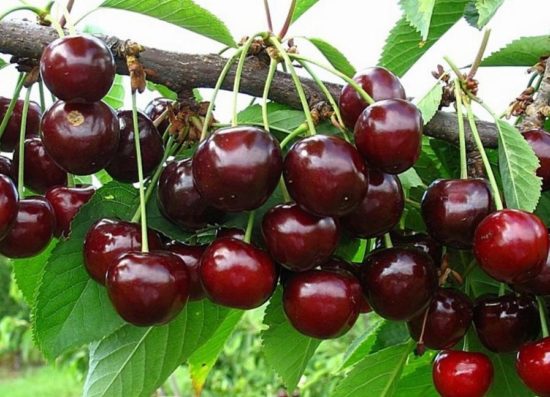
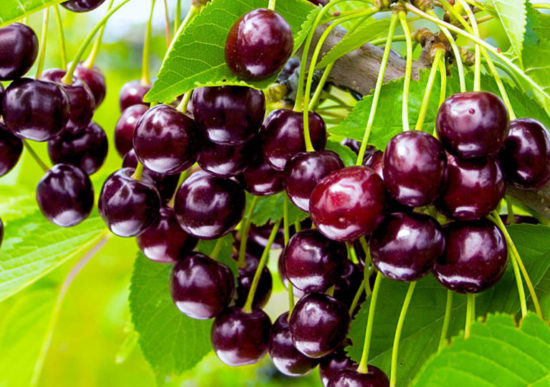
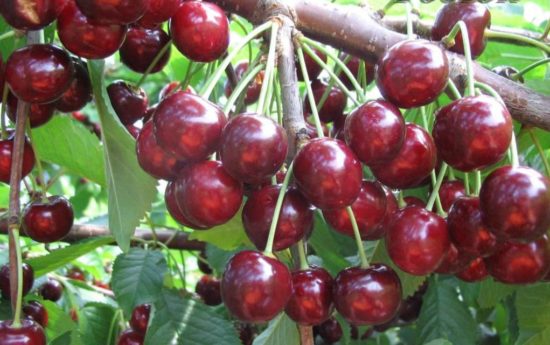
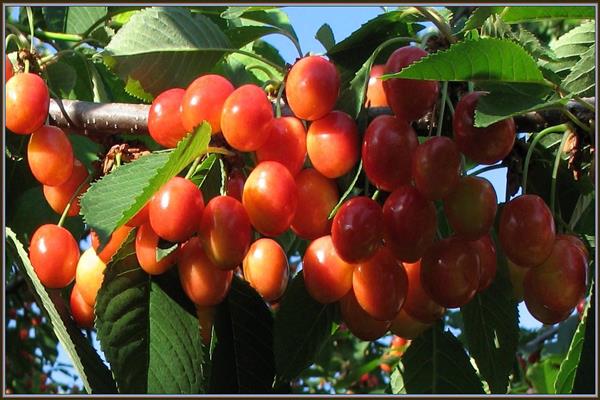
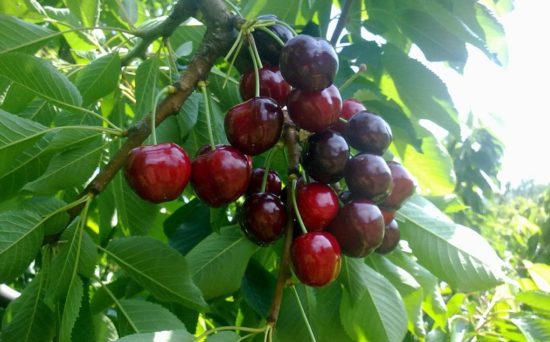
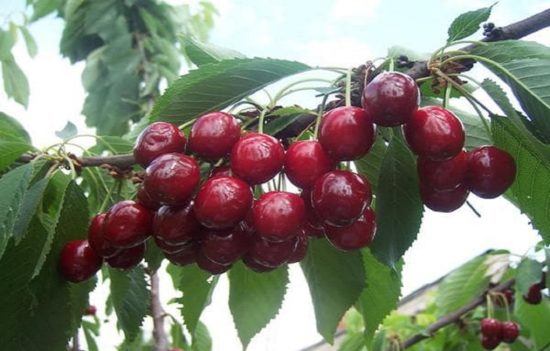
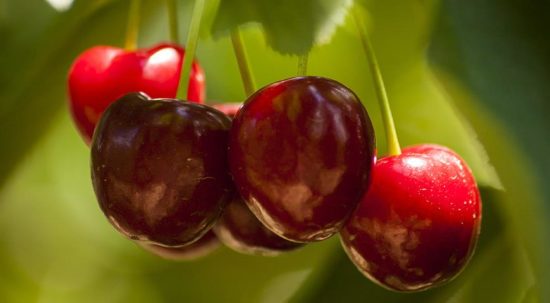
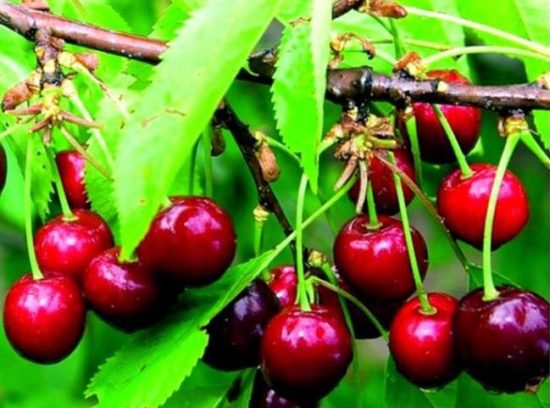
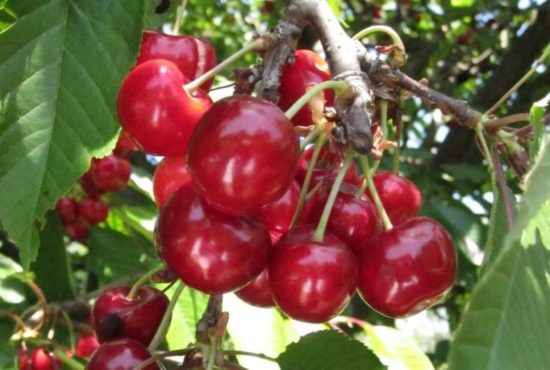
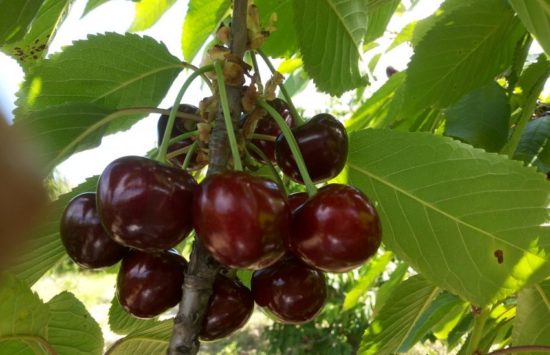
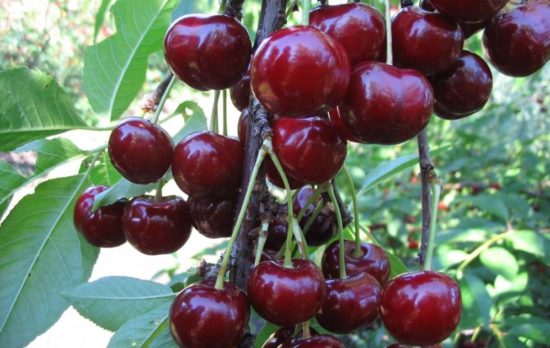

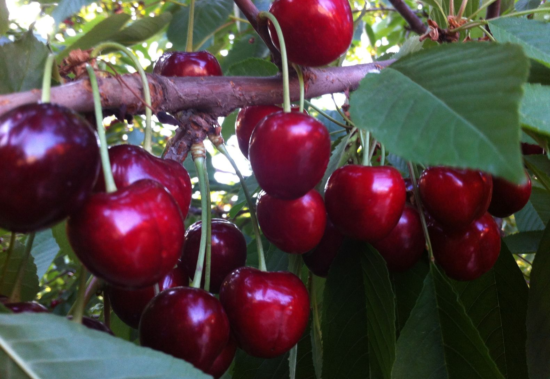
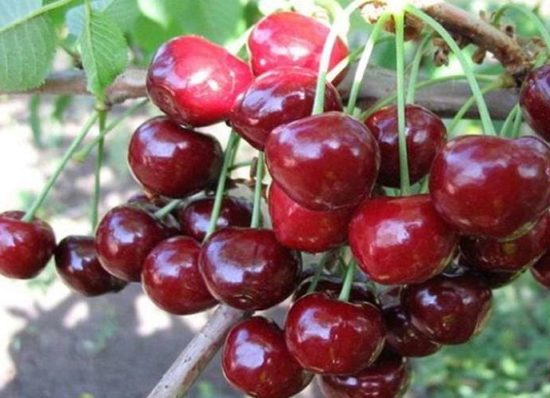
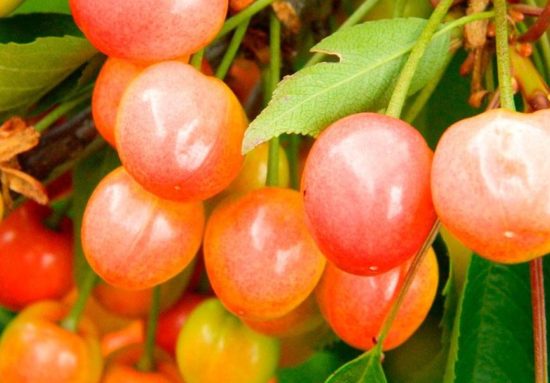
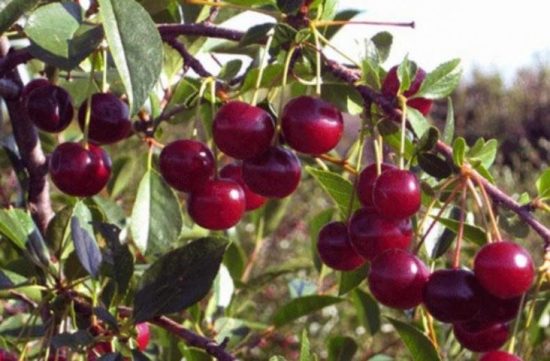
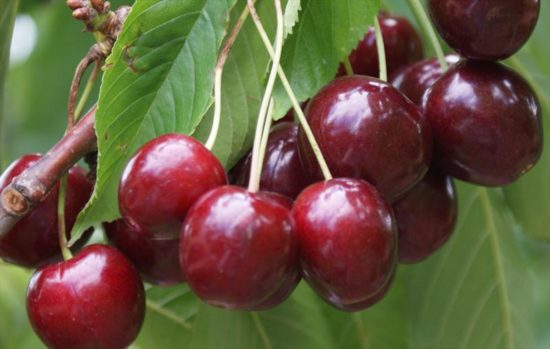
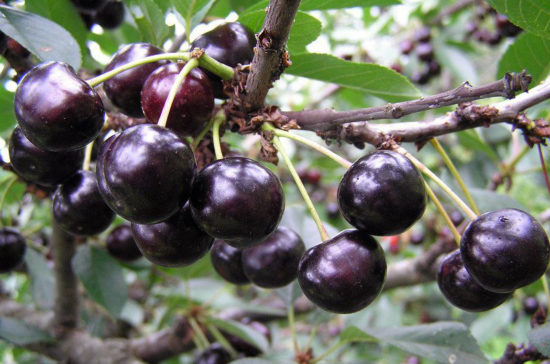

 CUCUMBERS NEVER GET SICK, I'VE BEEN USING ONLY THIS FOR 40 YEARS! I SHARE A SECRET WITH YOU, CUCUMBERS ARE LIKE THE PICTURE!
CUCUMBERS NEVER GET SICK, I'VE BEEN USING ONLY THIS FOR 40 YEARS! I SHARE A SECRET WITH YOU, CUCUMBERS ARE LIKE THE PICTURE! You can dig a bucket of potatoes from each bush. Do you think these are fairy tales? Watch the video
You can dig a bucket of potatoes from each bush. Do you think these are fairy tales? Watch the video
 How our fellow gardeners work in Korea. There is a lot to learn and just fun to watch.
How our fellow gardeners work in Korea. There is a lot to learn and just fun to watch. Eye trainer. The author claims that with daily viewing, vision is restored. They don't charge money for views.
Eye trainer. The author claims that with daily viewing, vision is restored. They don't charge money for views. A 3-ingredient cake recipe in 30 minutes is better than Napoleon. Simple and very tasty.
A 3-ingredient cake recipe in 30 minutes is better than Napoleon. Simple and very tasty. Therapeutic exercises for cervical osteochondrosis. A complete set of exercises.
Therapeutic exercises for cervical osteochondrosis. A complete set of exercises. Which indoor plants match your zodiac sign?
Which indoor plants match your zodiac sign? What about them? Excursion to German dachas.
What about them? Excursion to German dachas.